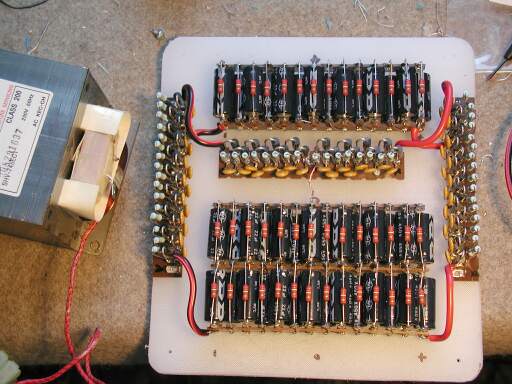I'm confused on something and could use an explanation. I've seen this configuration in many schems, but I always figured the parallel caps were just for snubbing voltage switching transients.
The Valve Wizard
For the second diagram, the paragraph states
"If diodes are used in series, a capacitor should be placed in parallel with each one, to ensure equal voltage sharing between each diode."
I don't understand how this works. I could see it working if the caps were resistors instead, but I'm not seeing how the caps (or caps in parallel with diodes) could balance voltage.
The Valve Wizard
For the second diagram, the paragraph states
"If diodes are used in series, a capacitor should be placed in parallel with each one, to ensure equal voltage sharing between each diode."
I don't understand how this works. I could see it working if the caps were resistors instead, but I'm not seeing how the caps (or caps in parallel with diodes) could balance voltage.



Comment